Biogas and Anaerobic Digesters
When plants decompose in the open air, they emit CO2. When plants decompose without oxygen, they emit methane.
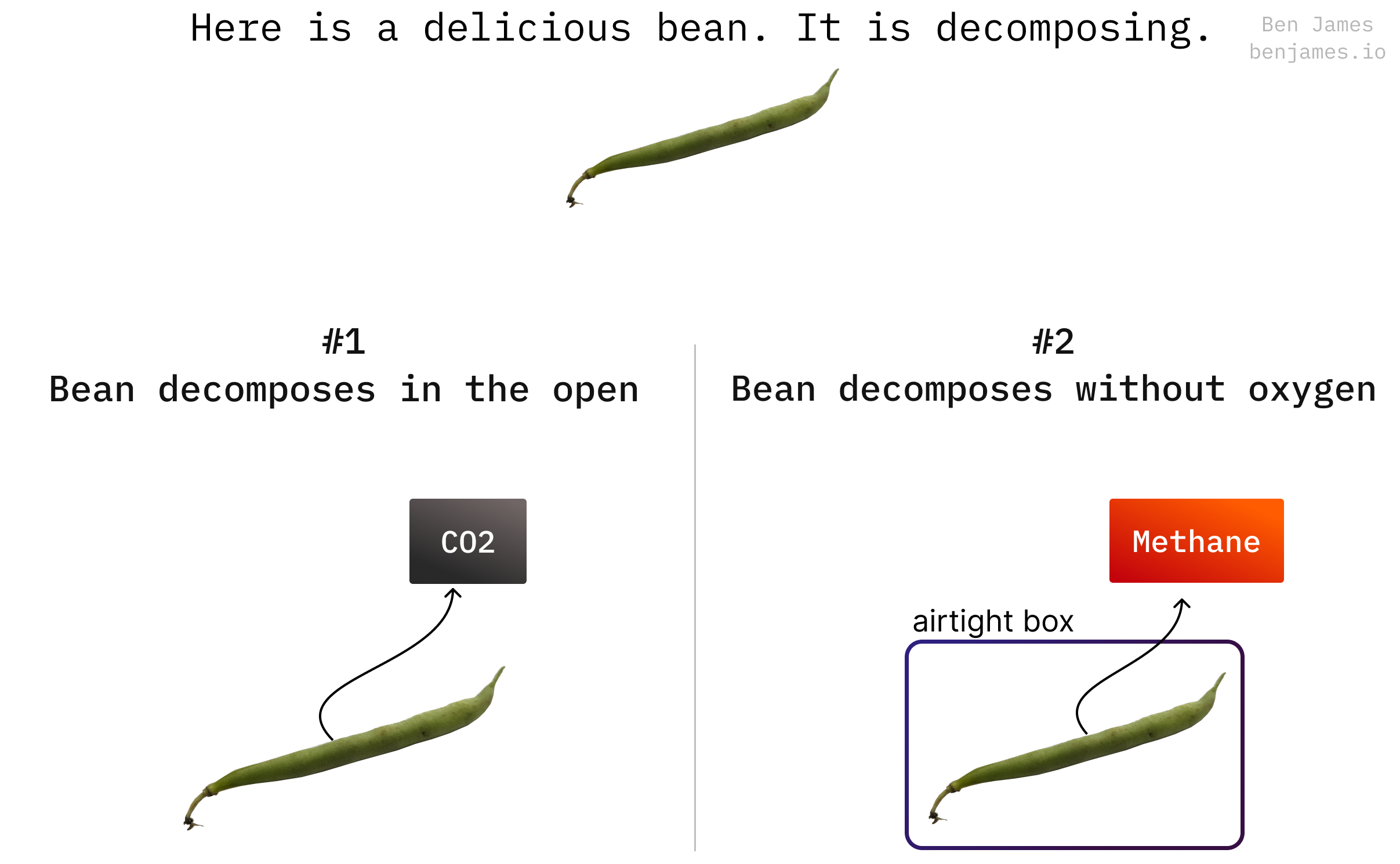
It’s bad when you suffocate decomposing biomass, because it makes methane. Examples of this are:
- Landfills
- Rice paddies (biomass covered with water)
- Big piles of biomass, where the center isn’t aerated (eg, big piles of animal manure)
- The reservoirs of dams. The biomass in the valley is covered by water, so dams can emit a lot of methane.
The point of the biogas industry is to capture methane from things-decomposing-without-oxygen.
That means burning methane is much better for the climate than releasing it into the atmosphere. By burning it, you convert methane into CO2.
This is why excess natural gas is flared. Natural gas is mostly methane, so just releasing it would be far worse for the climate.
In this piece we’ll walk through biogas, landfills, anaerobic digesters, and whether biogas is any good. Let’s go.
Biogas and landfills
A big ‘ol pile of biomass, like a landfill site, will generate methane and CO2 as it decomposes. This mixture is called biogas, and it’s usually about half methane, half CO2.
Places like the UK & US capture most of this gas. But worldwide, most landfill gas is not captured, so the emissions from landfill sites are colossal. Landfill gas is the third biggest source of methane (after livestock/ag and fossil fuel extraction).
Luckily, it’s easy to capture the gas. Just seal the landfill with a plastic liner and poke some straws in.
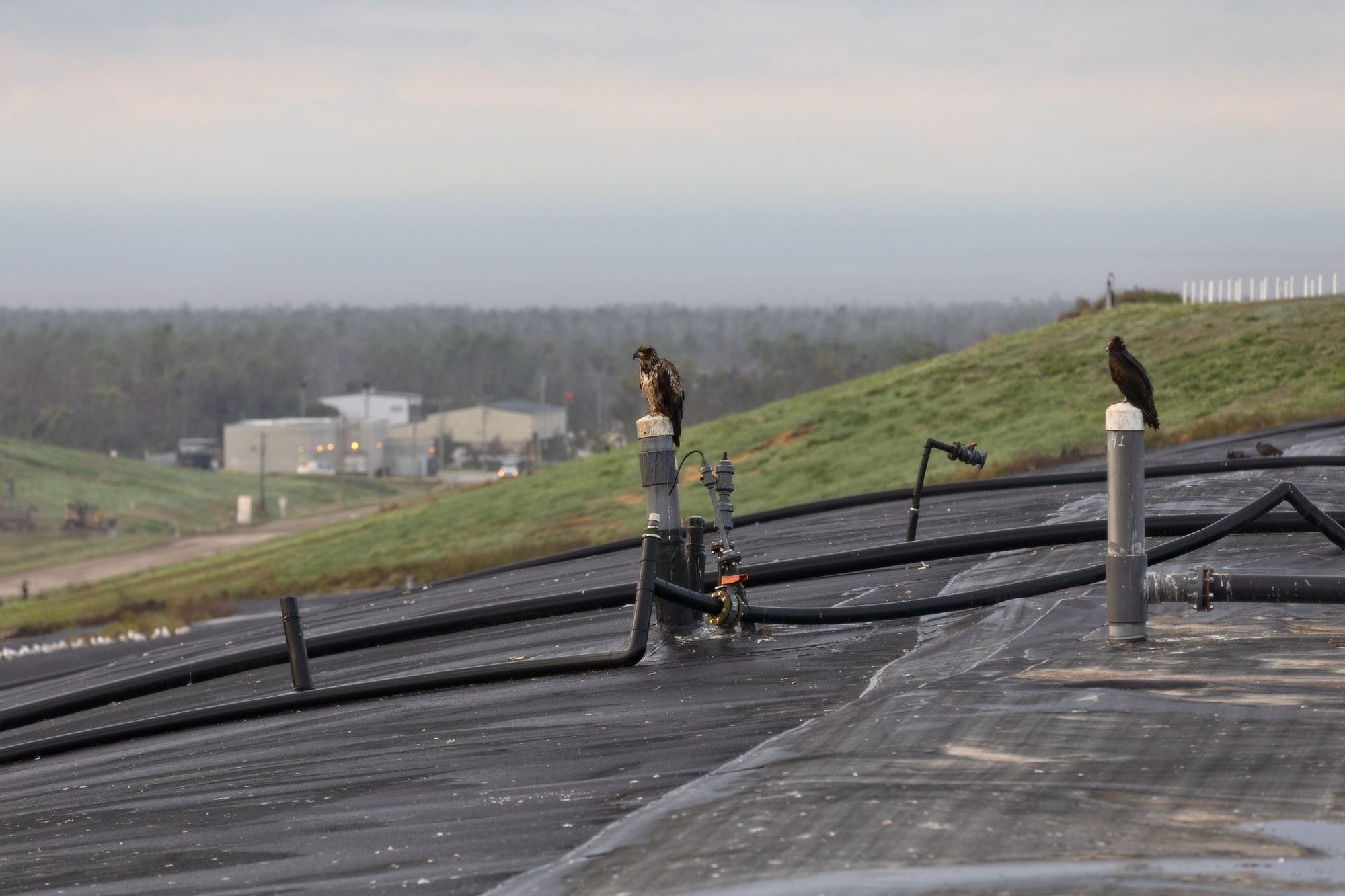
Free electricity baybeeee (kinda)
The captured biogas is burned to make heat or electricity. Burning things sounds bad for the climate, but in this case, it’s actually good. By burning the methane in the biogas, we’re turning it into less-warming CO2.
We “upgrade” a small amount of biogas (about 17%), by removing the CO2 to leave pure methane, called biomethane. We can then inject this into the gas grid and call it Renewable Natural Gas (RNG), because it’s a non-fossil-fuel source of methane.
Here’s the summary so far.
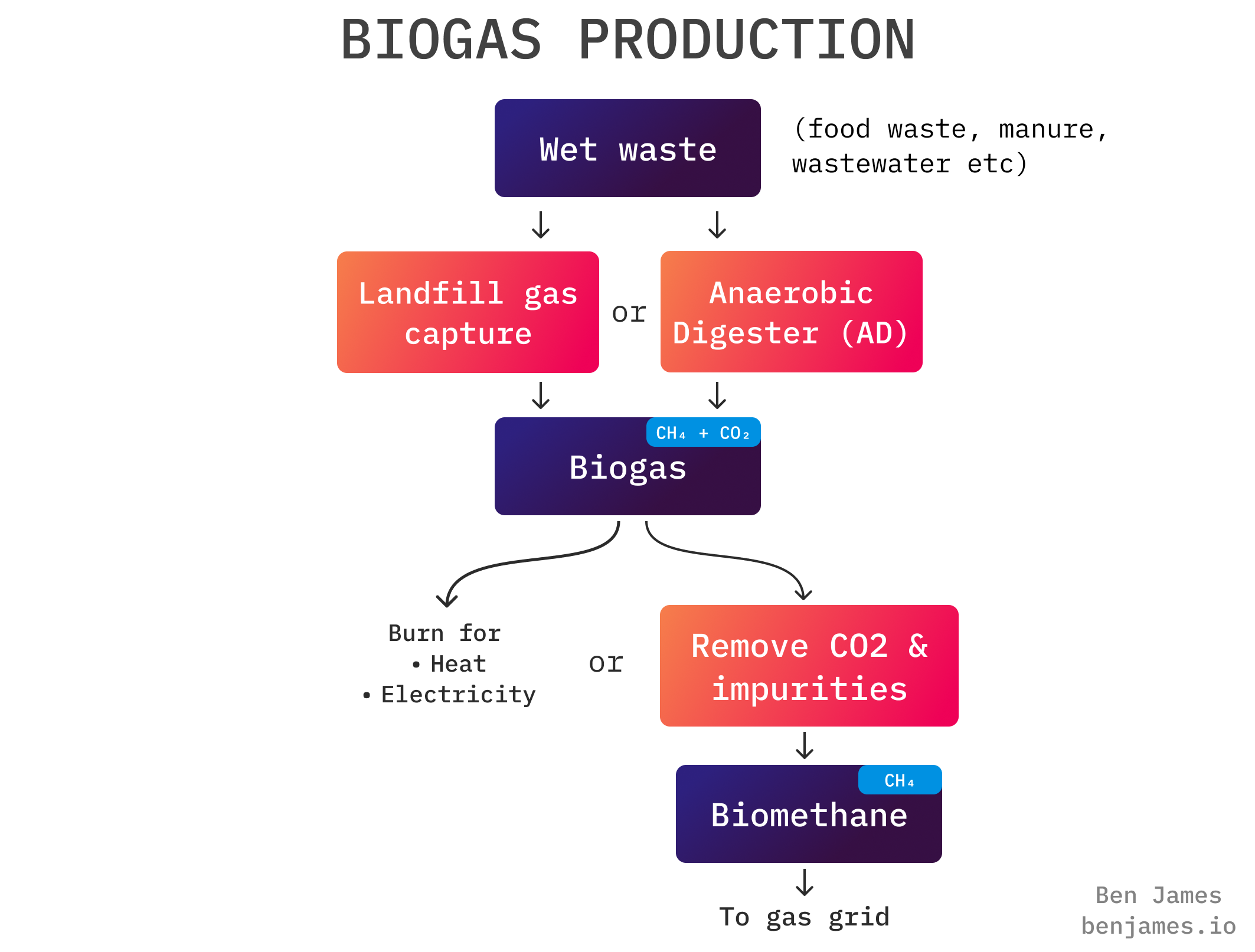
Note that there are two main ways of producing biogas: landfills and anaerobic digesters.
Anaerobic Digesters
An anaerobic digester is just an accelerated landfill. It’s a big, airtight tank where you stir your waste to turn it into biogas quickly - a month instead of a lifetime. Anaerobic just means “without oxygen”.
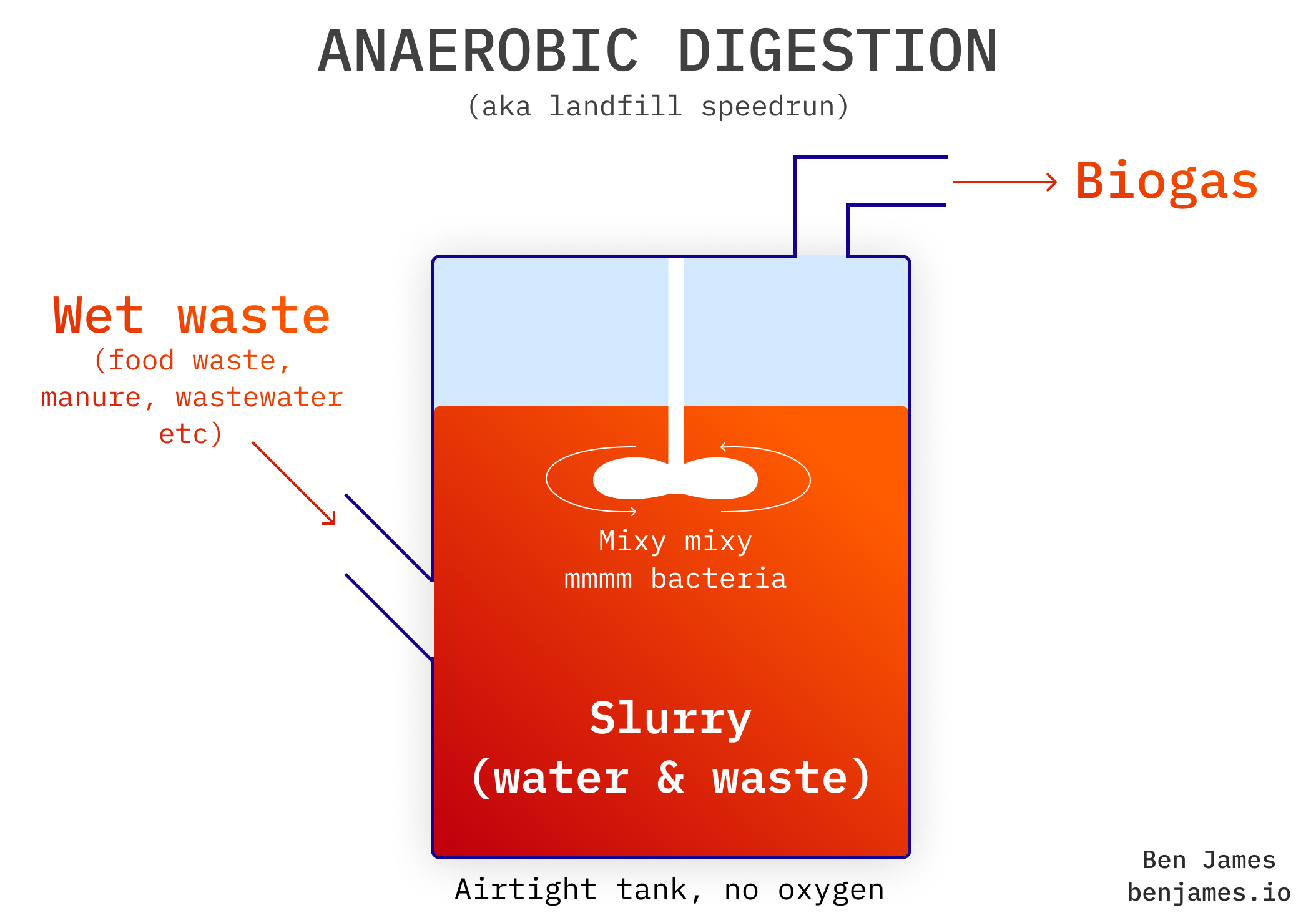
Anaerobic digesters really do just look like big tanks irl.
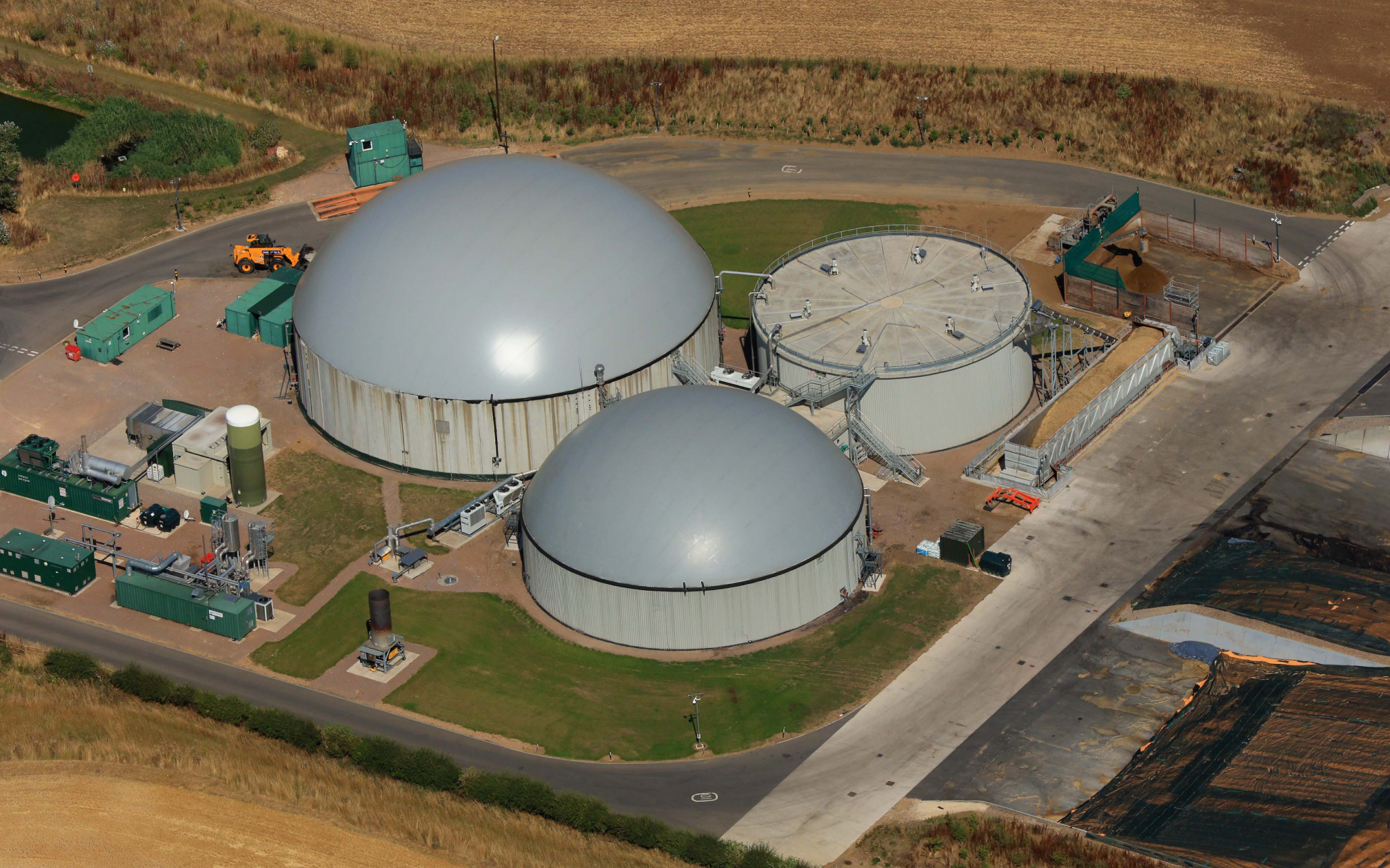
Is this stuff good for the climate?
It’s worth stepping back for a moment to evaluate the flow of GHGs here.
Remember: because we’re dealing with biomass, the CO2 that it contains originally came from the atmosphere.
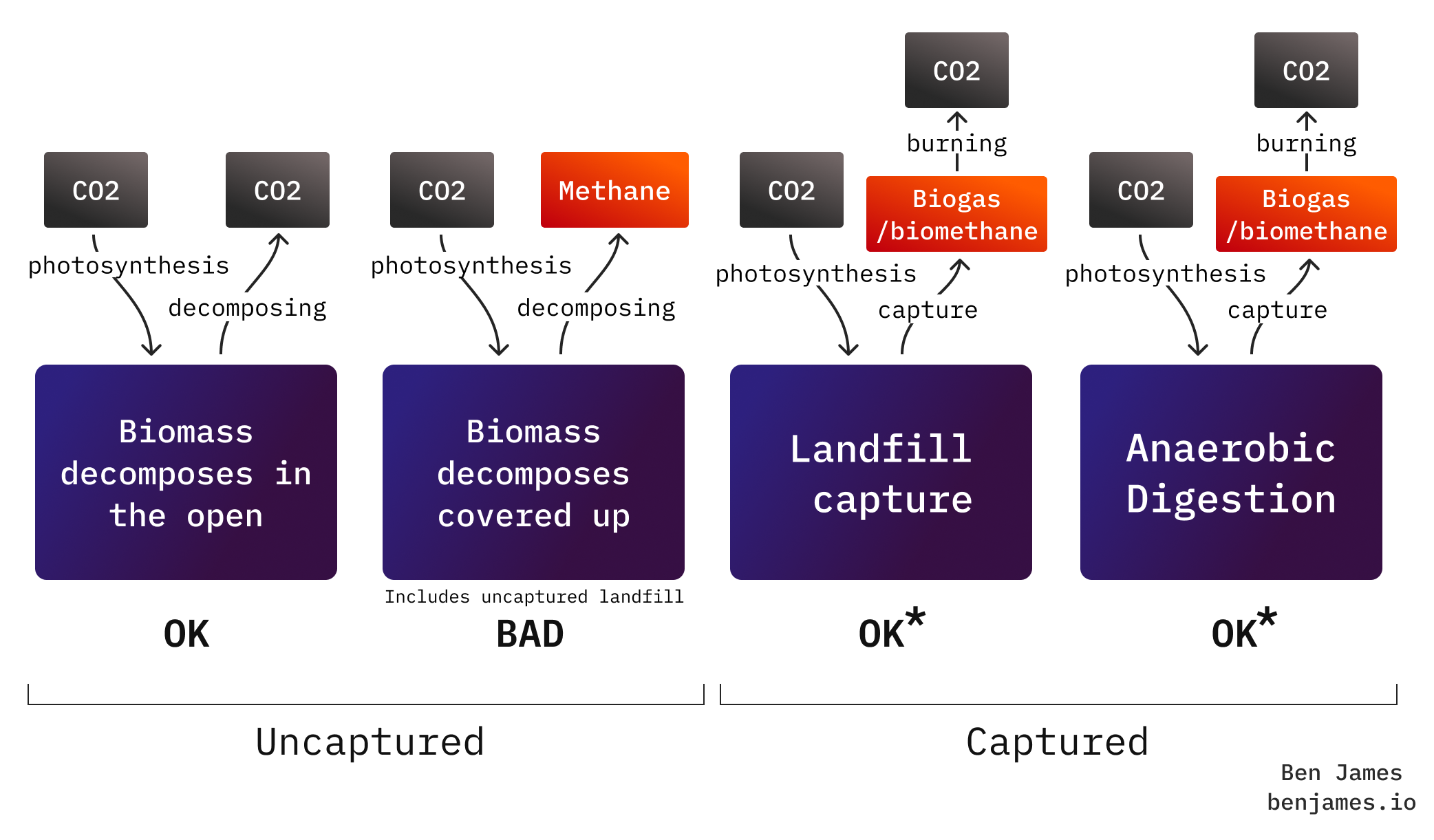
Capturing and burning biogas from landfills is good, because those emissions are unavoidable. Without capturing it, we’d just release methane.
But what about anaerobic digesters? Aren’t they just accelerating the process of making methane?
There are two lenses we can take here: the methane lens and the feedstock lens.
The Methane Lens
If you are using biomethane from ADs to displace natural gas, that is objectively good for emissions.
- The CO2 from burning fossil natural gas came originally from the ground.
- The CO2 from burning biomethane came originally from the atmosphere.
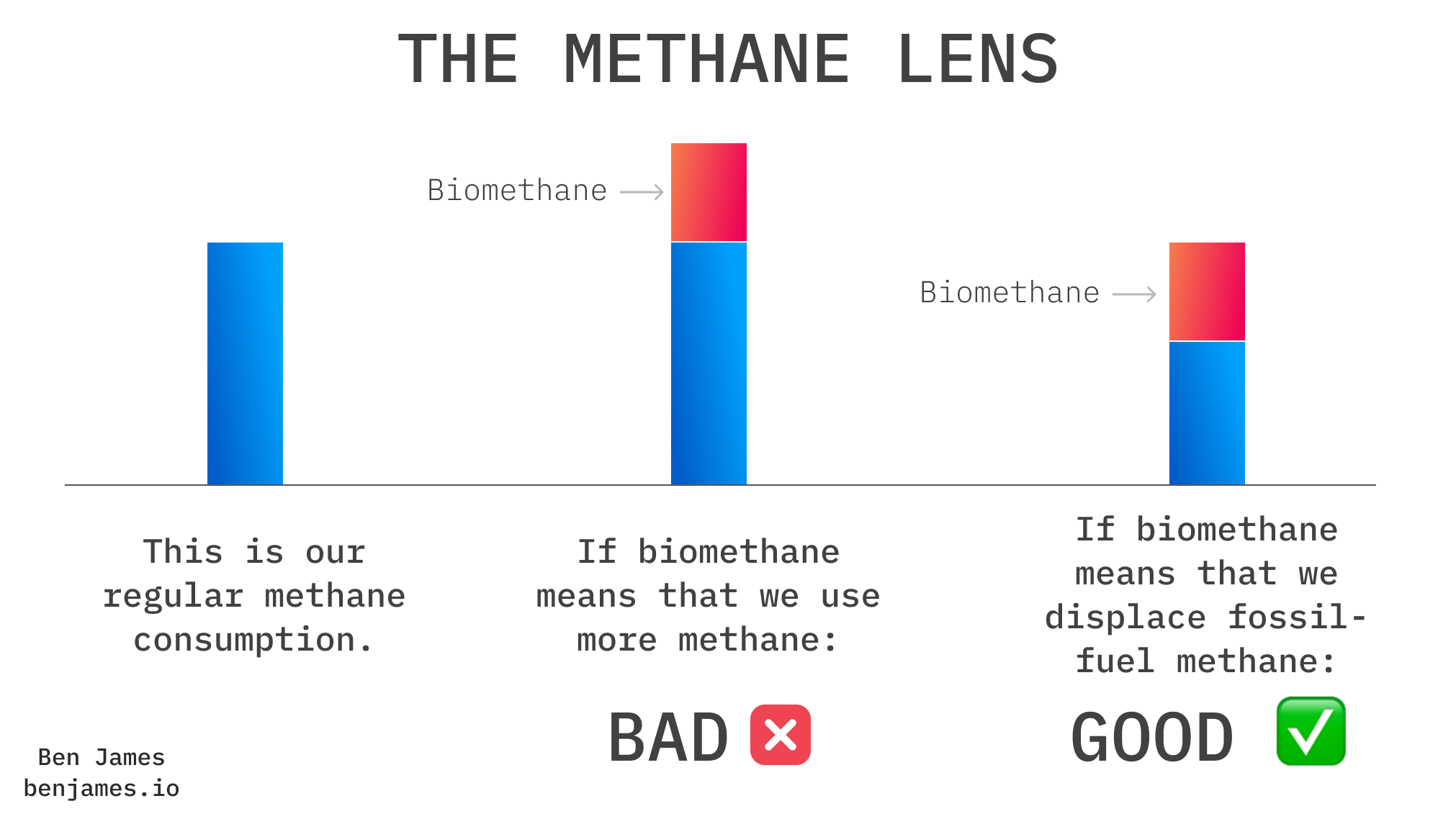
It seems that most biomethane today does displace fossil fuels, so this is good!
The Feedstock Lens
Here we consider the counterfactual: what would have happened to our feedstock if we didn’t anaerobically digest it?
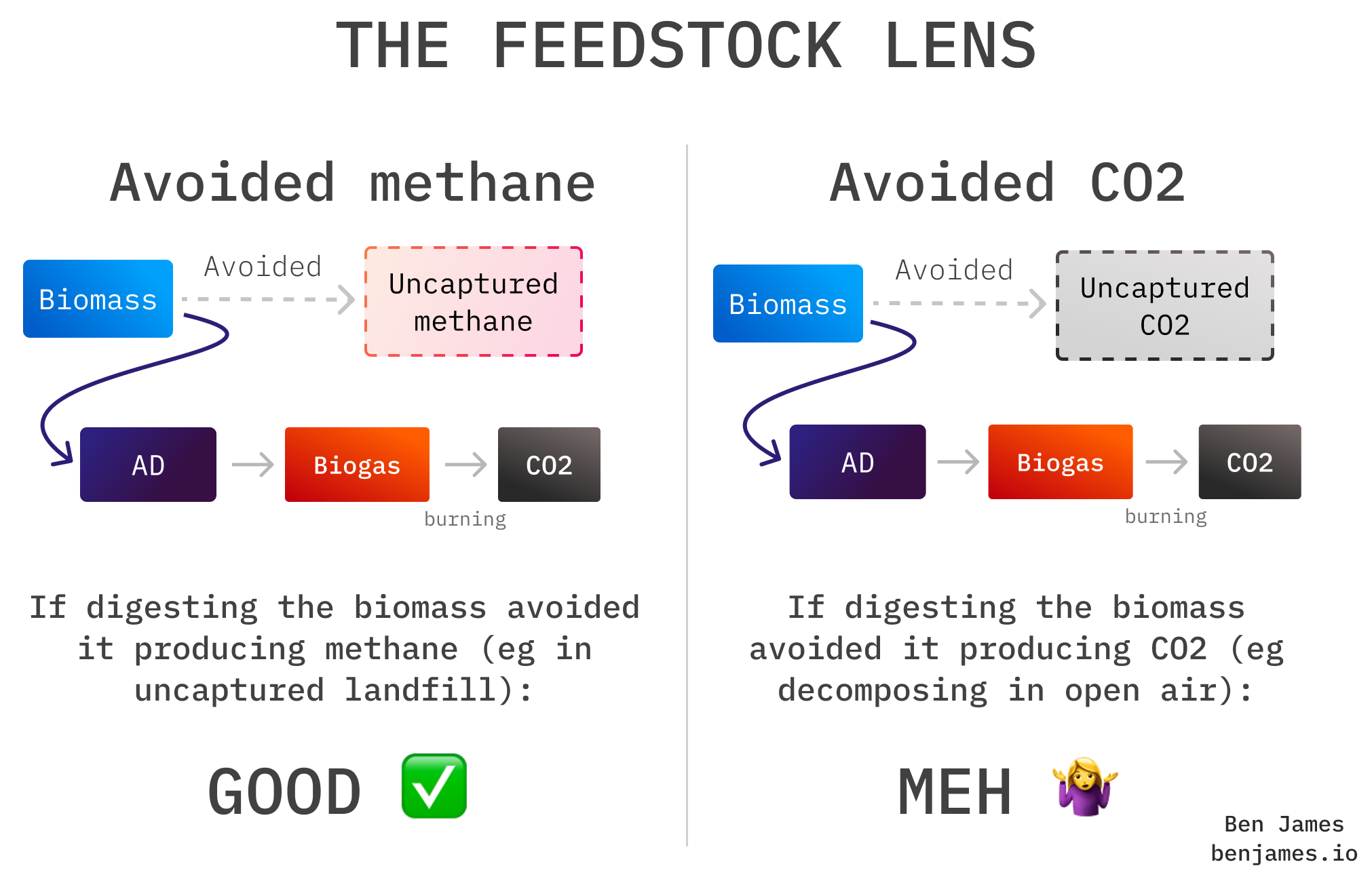
- If our biomass would have decomposed to make uncaptured methane -> AD is good.
- If our biomass would have decomposed to make uncaptured CO2 -> AD is a wash, and quite possibly worse than nothing. Not only is the end product still CO2, but you’re making intermediary methane, which could leak.
Most of the things that we put into anaerobic digesters today fall into the first category, which is GOOD! Two examples:
- Animal manure. Many ADs in the US are 100% animal manure, that otherwise would have decomposed into unabated methane.
- Food waste that otherwise would have gone into landfill. Even if the landfill has methane capture, anaerobically digesting waste will have a higher capture rate.
Can biogas be scaled?
Today, biogas is predominantly a German story. Europe produces more biogas than the US and China combined, and two thirds of European capacity is in Germany.
Across the whole of Europe, we produce 191 TWh of biogas and upgrade 17% into biomethane. That’s not nothing, but it doesn’t make much of a dent in our gas supply.

Worldwide, we have enough sustainable biomass to replace 20% of natural gas usage with biomethane, today. It’s just that natgas is cheap, and making biomethane is expensive.
Natural gas is currently about $30 / MWh in Europe, and about $7 / MWh in the US (fracking!). Today biomethane will run you about $100 / MWh. Most of the world’s biomethane potential is estimated to sit between $35 and $70 / MWh.
Conclusion
The world is full of decomposing plants, food waste and manure. Right now, a lot of this is spewing uncaptured biogas. Capturing that is a good thing.
Theoretically, we could tell people to aerate their waste biomass, so that it just makes CO2, and not biogas. But they don’t get much in return for doing this. By making biogas - either from anaerobic digesters or landfill capture - they get a fuel that they can use or sell. Not only that, it can displace fossil methane.
The capacity for biogas to scale is limited. We can’t produce enough biomethane to replace all of today’s gas demand. Luckily, gas demand will decrease due to electrification. Denmark is aiming for 100% of gas usage to be biomethane from 2030, because of high heat pump adoption and increased biogas production. So biogas could make up an increasing proportion of a shrinking quantity.